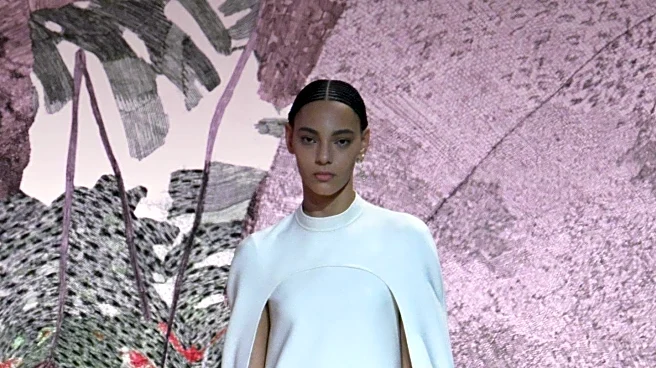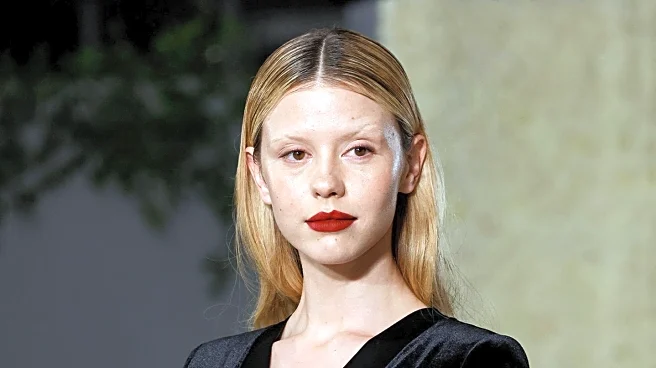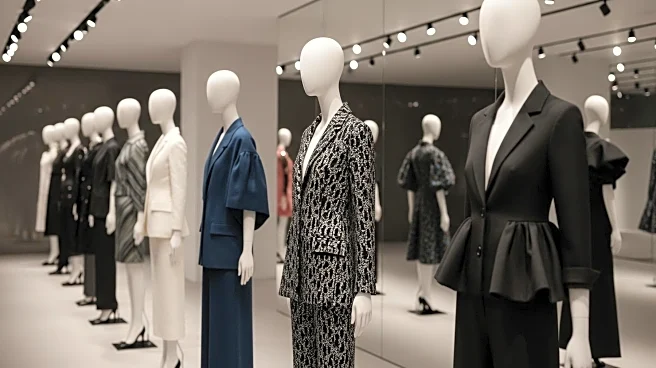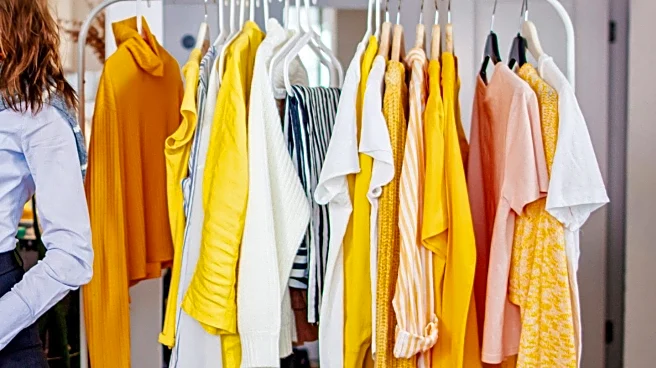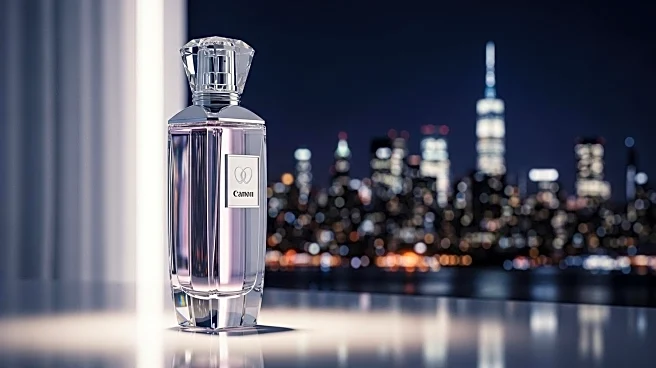What's Happening?
At the recent New York Fashion Week, designers showcased their adaptability in response to various economic challenges, including fluctuating tariffs, changing consumer sentiments, and a struggling luxury sector. Key figures in the fashion industry, such as Steven Kolb, CEO of the Council of Fashion Designers of America, highlighted the creative optimism and originality displayed on the runways. Designers like Tory Burch, Michael Kors, and Ralph Lauren emphasized the enduring relevance of American sportswear. Many brands focused on creating products that are more likely to succeed in the current market, adjusting price points and expanding their offerings to include more accessible items. For instance, Area and Elena Velez introduced more affordable basics, while Kate Barton and Wiederhoeft emphasized ready-to-wear and accessories. The event also saw designers like Sally Lapointe and Willy Chavarria opting for smaller, more intimate shows to cater to their core audiences.
Why It's Important?
The strategies employed by designers at New York Fashion Week reflect broader trends in the fashion industry, where economic pressures are prompting brands to innovate and adapt. By focusing on what sells and tailoring their offerings to consumer demands, designers are attempting to navigate a challenging retail environment. This shift could have significant implications for the U.S. fashion industry, potentially influencing how brands approach marketing, production, and sales. The emphasis on direct-to-consumer models and unique, smaller-scale presentations may also reshape the traditional fashion show format, making it more accessible and engaging for consumers. As brands seek unconventional revenue streams and partnerships, the industry could see increased collaboration with non-fashion entities, further diversifying the fashion ecosystem.
What's Next?
Looking ahead, the fashion industry may continue to explore new revenue models and partnerships to sustain growth. The introduction of 'The Venue Collective' by KFN, offering shared spaces for designers, suggests a move towards more collaborative and cost-effective show formats. This initiative aims to bridge the support gap between New York and European fashion weeks, potentially leading to more public-facing events and cultural programming. As designers adapt to these changes, the industry could see a shift towards more inclusive and diverse fashion weeks, with increased participation from international brands and a focus on creating a festival-like atmosphere similar to Art Basel.
Beyond the Headlines
The evolving landscape of New York Fashion Week highlights the intersection of fashion with other cultural and economic sectors. As designers seek to engage with consumers in new ways, the role of social media and digital platforms becomes increasingly important. This shift towards more experiential and consumer-focused events could redefine the relationship between fashion brands and their audiences, emphasizing authenticity and relatability. Additionally, the industry's response to economic challenges may inspire other sectors to adopt similar strategies, fostering innovation and resilience in the face of uncertainty.

